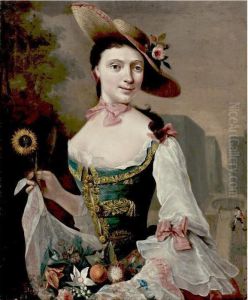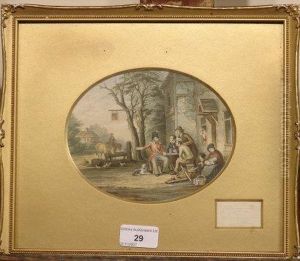Le Blond Paintings
Jean-Baptiste Le Blond, born in 1670, was a French architect, garden designer, and engraver, known for his significant contributions to the development of the Baroque style in architecture and landscaping. His career was marked by innovative designs that combined the elegance of French classicism with the grandeur and scale of Baroque aesthetics. Le Blond's work is often associated with the expansion of architectural and landscaping ideas that were taking root in Europe during the late 17th and early 18th centuries. Le Blond's most notable contribution was perhaps his role in the development of the city of Saint Petersburg, Russia. Invited by Peter the Great in the early 18th century, Le Blond applied his architectural and urban planning skills to contribute to the design and construction of the newly founded city. His work in Saint Petersburg included the design of several private and public buildings, as well as the layout of gardens and open spaces, which were influenced by his experience in French garden design. This period of his career highlighted his ability to blend architectural principles with the natural landscape, creating harmonious and functional urban environments. Despite his achievements, Le Blond's career was relatively short-lived. He died in 1719, leaving behind a legacy that had a lasting impact on the architectural and urban development of Saint Petersburg and the Baroque style in general. His contributions to architecture and garden design are remembered for their innovative approach to combining formality with the natural elements, which has influenced the development of European urban landscapes. Le Blond's work remains studied and admired by architects, urban planners, and historians for its visionary approach and its role in shaping the aesthetic and functional aspects of urban development during a pivotal period in European history.

